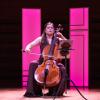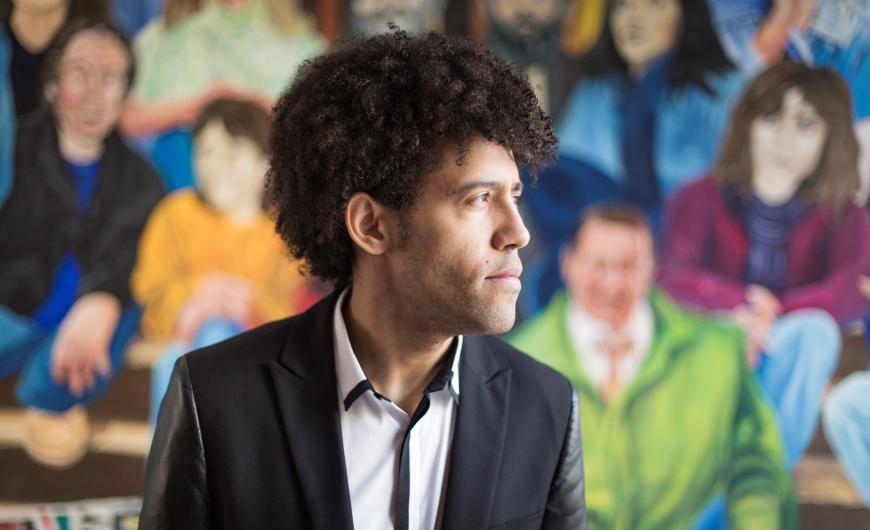
Describing the work of an orchestral conductor inevitably involves metaphors. Rafael Payare borrows his from a different art form.
“Giving a concert is a little bit like a dance,” he said. “The orchestra and I are dance partners.” Rehearsals, as he views them, are a place where each partner discovers “what we can do together — whether we can do a twirl.”
Payare, 43, has two regular dance partners: the San Diego Symphony, where he is in his fourth season as music director, and the Montreal Symphony, where he is in his first. His very full dance card also includes a recent debut with the New York Philharmonic and a set of three concerts April 13–16 with the Los Angeles Philharmonic at Walt Disney Concert Hall.
Following in the footsteps of his fellow Venezuela native and close friend Gustavo Dudamel, Payare is rapidly achieving recognition as a world-class conductor. His recent recording of Gustav Mahler’s Fifth Symphony, his first album with the Montreal Symphony, received rave reviews.
He talked about his upbringing and approach to music in a conversation from Munich, where he was guest conducting that city’s Philharmonic. (Our conversation has been lightly edited for concision and clarity.) The one topic he would not broach was the possibility of succeeding Dudamel in Los Angeles. That would entail speculating about the future, he said, adding, “I don’t have fun doing that.”
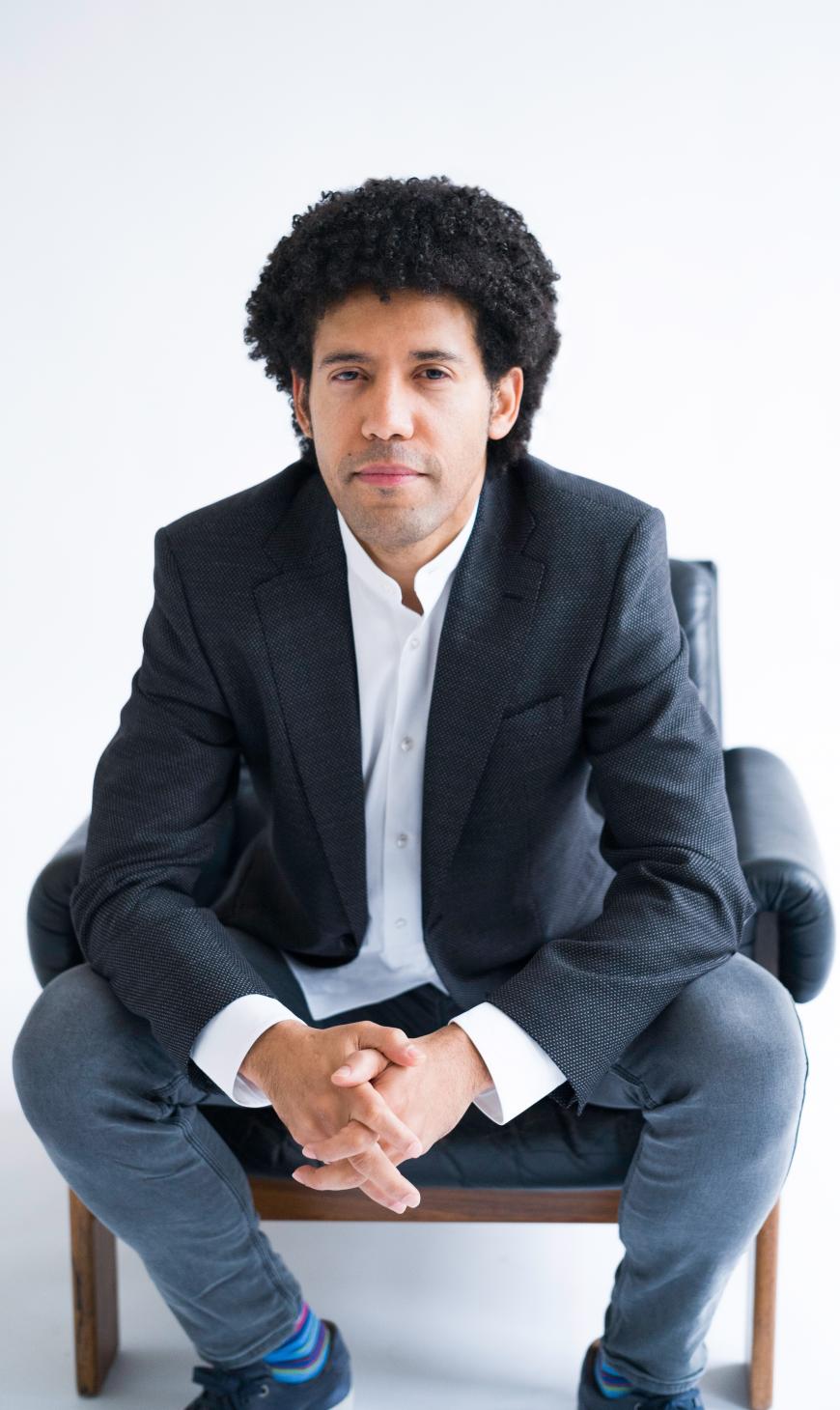
I’d like to start by talking about your LA Phil concerts. You’ve said you like to plan an orchestral program as a “complete voyage.” This voyage starts with Darker America, a William Grant Still piece you also performed with the NY Phil recently. How did you discover the work, and what do you like about it?
I was looking at pieces from the first 40–50 years of the last century, and I was very happy to discover it. In it, you can see William Grant Still trying to discover his voice. The way he orchestrates it is quasi-French. You get a hint of what his style would become.
After that, there’s a Richard Wagner song cycle and Brahms’s First Symphony. During their lifetimes, those two composers were considered radically different. Does putting their music side by side bring out something in each of them?
It is nice to see a little glimpse of what was happening at that time. Brahms was, of course, writing symphonies, while Wagner was integrating music with drama. But they influenced each other — even though I’m sure they’d be mortified to think that.
You are also giving an open rehearsal of the Brahms. What will the audience see and hear? What’s the process of rehearsing with an orchestra like for you?
I’m trying to align everybody’s vision of what goes on in a piece. Trying to get the same colors, the same flavors, the same smells. We also try to discover little things in the score here and there.
Does that entail a lot of stopping and starting?
It depends on how the rehearsal is going. If the piece is going fine, there’s no reason you have to stop. It might be that we play it, and afterward I tell them, “Let’s be careful with this,” or, “Let’s take a different road here.”
On that point, you were critical of the movie Tár for implying a conductor can unilaterally impose his or her vision on an orchestra when, in your experience, at least, it’s more of a collaboration. What do you mean by that? How do the players collaborate with you to come up with an interpretation?
[Her behavior in rehearsal, as depicted in the movie] is not the way you act in front of professional musicians. We’re all in this together. The idea is to try to get everyone to enunciate a certain phrase in the same way. You don’t impose that — you create it.
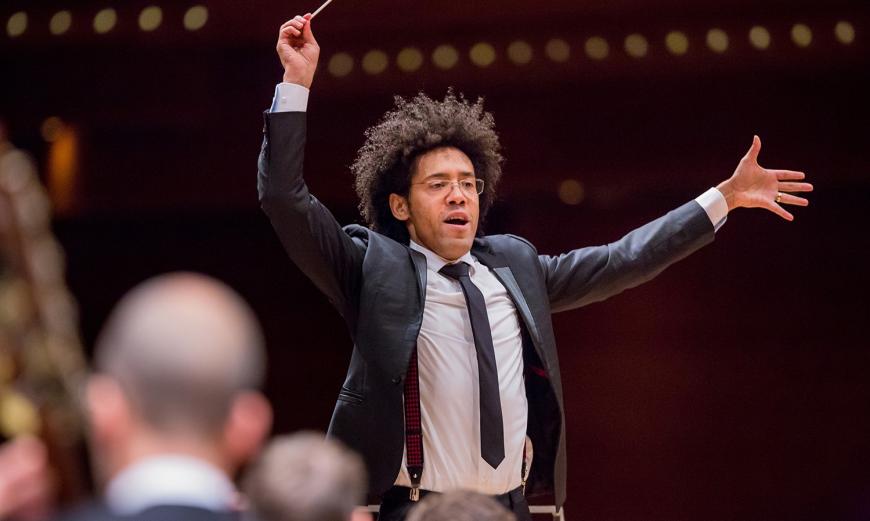
So you don’t approach a performance as “my” Brahms First.
No, not at all. What I have in my head is completely different from the sound produced by the musicians in front of me. Even with the same orchestra, the sounds are going to come in a different way [on a different occasion]. The baton doesn’t make any sound. So it has to be a partnership.
Even when it comes to something as basic as tempos, are your choices dependent on what the orchestra is doing?
Absolutely. The tempo in your head might be particularly fast, but it might not fit the sound of a particular orchestra. If you apply your original tempo, the result is not going to be good. I’m not saying the orchestra cannot play it at that tempo; it’s a question of how. You need to adapt.
Speaking of Tár, I want to ask you about Mahler’s Fifth Symphony because your recording of it with the Montreal Symphony was recently released. It’s a strange work, which starts with a funeral march and concludes with an almost comedic touch. What’s the emotional journey of that piece, as you see it?
It’s a wonderful piece. In his first four symphonies, he is talking about mankind and nature. They are in the third person. In this symphony, for the first time, he is at the center.
Mahler was, at the time, struggling to be taken seriously, both as a conductor and as a composer. After doing a wonderful job in Hungary, he finally got a position in Vienna, and his pieces were starting to get played. Then he almost literally died of a hemorrhage. That’s why it starts with a funeral march.
[During this period, he also] met Alma, who at first didn’t want anything to do with him but later was enchanted by him. So this symphony includes the scare of almost dying as well as his declaration of love for Alma, which is the fourth movement [the famous Adagietto]. In the final movement, he is embracing life and looking forward to what the future will bring. The ending is so joyous.
It sounds like when you conduct a piece, you not only study the score but research the composer’s life and historical period, too.
Absolutely. I’m also interested in what was surrounding the composer in terms of literature or painting. From my point of view, the more material you can gather, the more ideas it gives you.
Let me get some background material on you. I’ve read you were something of a late bloomer, but you developed quite quickly once you started.
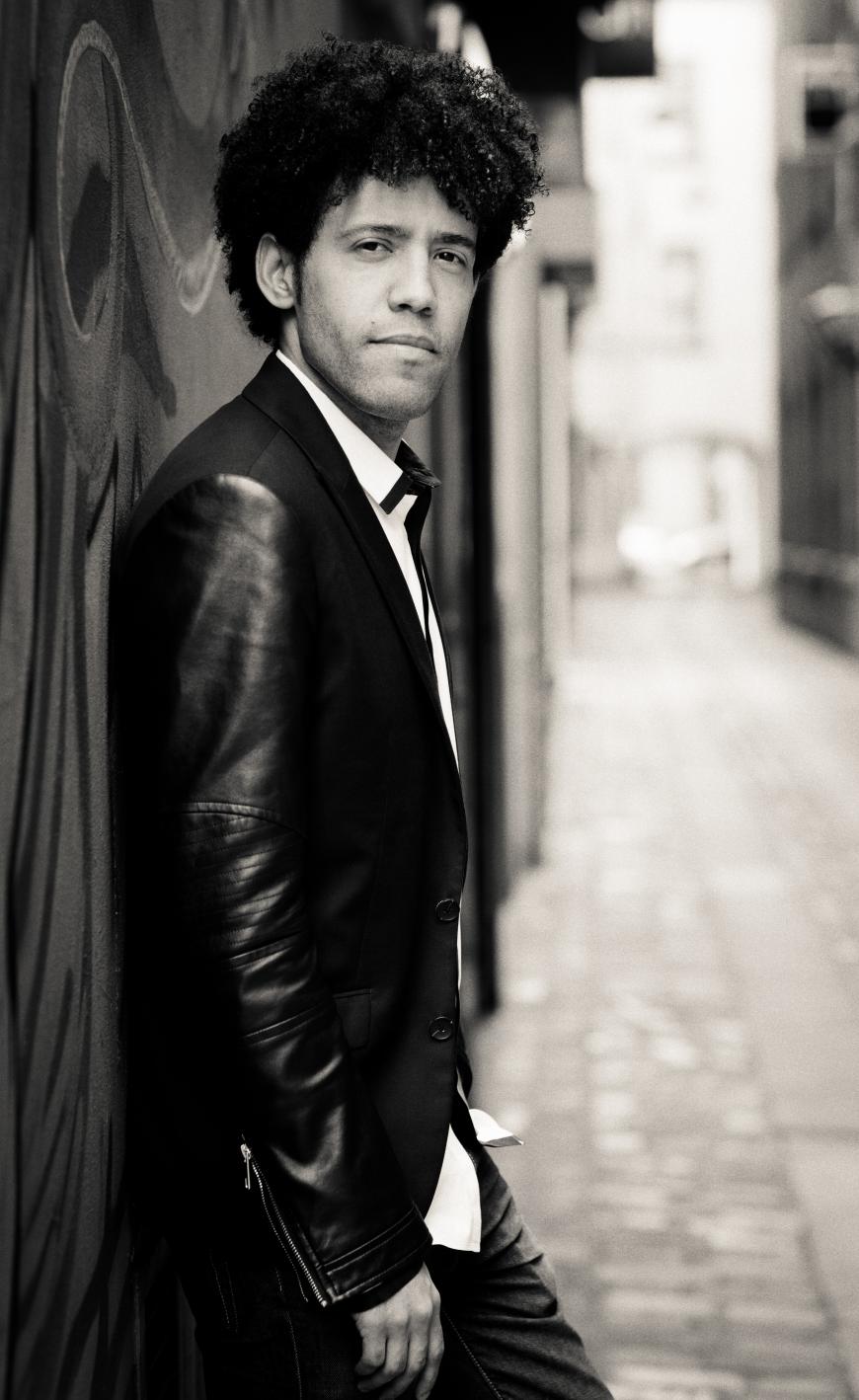
I was almost 14 when I discovered music. My brother was playing bassoon in one of the El Sistema youth orchestras. I remember hearing him play music in his room. I later discovered it was Tchaikovsky’s 1812 Overture that caught my attention. Then he took me to a rehearsal. The conductor gave me a horn and said, “Blow!” I did, and sound came out. So I started playing the horn.
Three weeks after that, he told me “Come tomorrow.” That was the day they were having auditions for the orchestra. At that point, I didn’t even know what an audition was. I remember people asking me, “What are you going to play?” I said, “The only thing I’ve been taught to play, a scale.” So I did. By the next Monday, I was in the orchestra.
You stayed in El Sistema for many years after that, moving up to more advanced ensembles. How old were you when you started to conduct?
The conducting bug hit me when I was in Italy, when I was on tour with the National Children’s Orchestra. This amazing Italian conductor, Giuseppe Sinopoli, conducted us. Within seconds, he changed the sound of the orchestra. And he did it without speaking Spanish. That really blew my mind. I thought, “I would like to do that one day, when my hair is white.”
I moved to Caracas and played with the national youth orchestra. One day when I was 24, I had a conversation with the founder of El Sistema, José Antonio Abreu. He told me he had heard me in a brass-ensemble concert, and he felt I had qualities that would be good in a conductor. He offered to teach me. At that point, that wasn’t in my head even a little bit. But everything started making sense after that.
I studied one-on-one with him. In time I started conducting the youth orchestra, then I started preparing [the adult orchestra] before he arrived. I would put my horn down and move to the podium. It was very organic. I then won the Malko Competition in 2012, when I was 32. After that, everything started happening.
You crossed paths with Gustavo Dudamel frequently in Venezuela, correct?
Absolutely. We have known each other since 1995. At one point, Gustavo was the concertmaster of the National Children’s Orchestra, and I was the first horn. We were close friends, so I was rooting for him [as he became a conductor], but I didn’t think that was my path. But when that changed, he was very supportive.
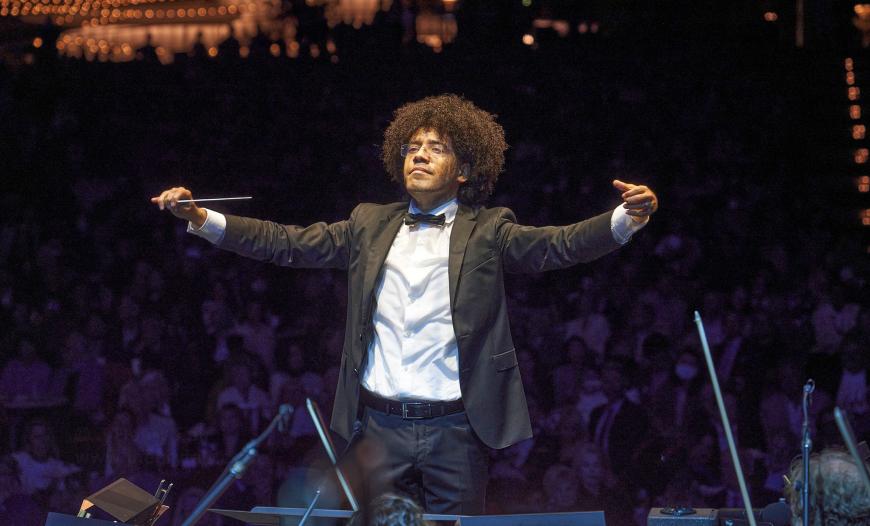
Currently you are music director of two major orchestras, and you do a considerable amount of guest conducting. It sounds overwhelming. Do you have to start saying no to people at some point?
Well, there are only so many weeks in a year. I have two wonderful orchestras plus other wonderful opportunities. I’m also the father of two kids, so I need time to be with my girls. But it doesn’t feel overwhelming. It is wonderful to be making music with these amazing institutions.
I had the pleasure of interviewing your wife, cellist Alisa Weilerstein, a few weeks ago. How do you maintain a family life given how much time each of you spends on the road?
There’s a lot of organizing. Fortunately, we know our schedules far in advance. We don’t like to be apart for more than two weeks. That’s our rule, which we have to break occasionally, but we don’t let it happen too often.
She said that when you’re all together, the family listens to Bach’s Goldberg Variations virtually every day. Why?
The kids love it. There’s a moment in the evening when they’re about to go to bed when the girls get cranky. We found playing a slow movement of a Mozart symphony really calms them. So we started doing that. We play the Goldberg Variations in the morning, when we’re rushing to get our older daughter to school. It helps us remain peaceful in the wave of craziness.
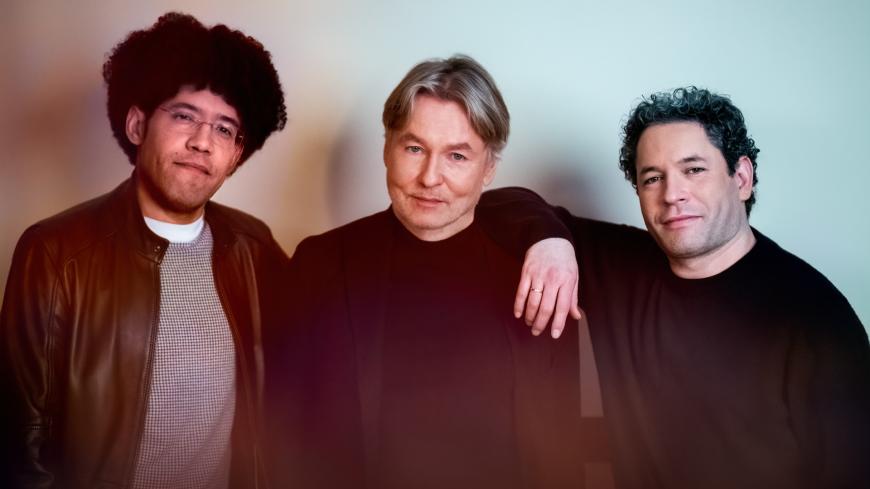
The San Diego Symphony has really raised its statewide profile since you took over as music director four seasons ago. How have you managed to achieve that?
I wasn’t alone. Martha Gilmer [the orchestra’s CEO] is amazing. When she offered me the position, we created some dreams together, and she has worked hard to achieve those dreams. With her, we have opened the Rady Shell [for outdoor concerts], and we’ll be in a renovated hall beginning in the fall. In November, we’ll join the LA Phil and San Francisco Symphony for the California Festival, which is very exciting.
Finally, I have read that maestro Abreu worked hard to instill a social conscience in his students. How does that manifest itself for you?
One thing the maestro taught us is that music should be a right, not a privilege. Everyone should have access to music education, no matter your background. He’d say, “A person who is poor should not have a poor education.” So wherever I am, I try to support community programs and expose as many people as possible to concert music. Music is something wonderful. It can change you. I know from my own experience.
Rafael Payare conducts the LA Phil in Still’s Darker America, Wagner’s Wesendonck Lieder with soprano Dorothea Röschmann, and Brahms’s Symphony No. 1 at 8 p.m. on April 13 and 15 and 2 p.m. on April 16 at Walt Disney Concert Hall. Find ticket information here.


